
Micro Four Thirds Photography
20 06, 11 Topic: Photography
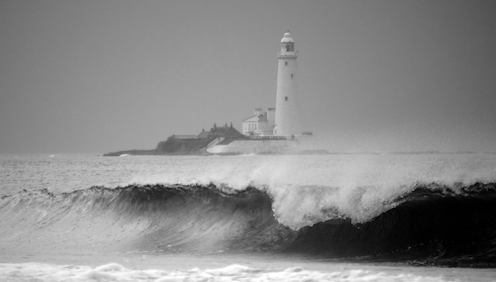
Whitley Bay Lighthouse (Micro Four Thirds Camera, 45-200mm Lumix lens, post-processed for contrast)
Micro Four Thirds Photography. My journey to find the right camera ...
... and what a task it turned out to be. Why? Well, there are a lot of options out there - and most of them are very good. In a sense then, it’s not easy to buy bad photographic gear. To justify the substantial sum of money your new gear will cost, it needs to suit your shooting requirements and make you feel confident about getting the results you want.
The photographs below are taken with the Lumix GF2 using various Micro 4/3 lenses as detailed. Many more photos may be seen at my Flickr Pro account.
My task was to find a practical and affordable camera that would allow me to develop my photographic skills, both for documenting my design work and for diarising my day to day visual stimulus. My goal in writing this post was to share and to crystallise those experiences. I should point out that I am not a photographer and the experiences, thoughts and conclusions contained herein are my mine alone.
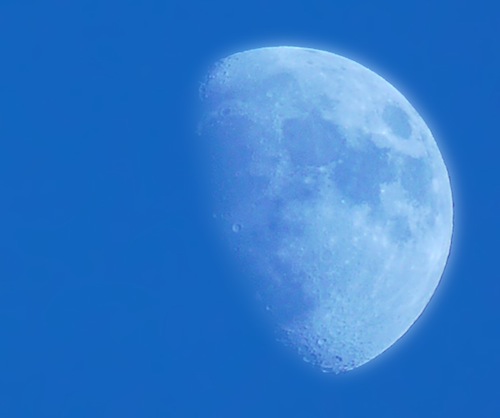
The moon, surprisingly clear even with digital zoom (Micro Four Thirds Camera, 45-200mm lens)
In choosing a camera as with most things, the starting point of your journey is important as is where you’d like the journey to take you. I had lots of experience with ‘point and shoot’ digital cameras and only limited experience with (Digital) DSLRs and SLRs of old. It turns out however that owning a ‘point and shoot’ is a terrific way into photography: a point and shoot camera makes good technical decisions on setting aperture, exposure and focus, and leaves the subjective decisions - the ones the camera can’t make - to the wit of the user. Hence the ‘point and shoot’ photographer can concentrate on the subject matter, the space that frames it and the light and shadow that describe it.
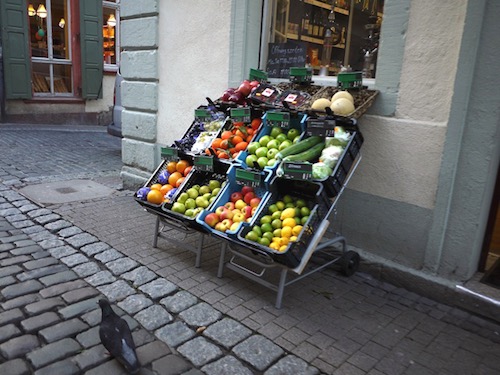
Market Square Fruit Shop, Heidelberg (Micro Four Thirds Camera, 14-42mm Lumix lens)
The transition to a ‘proper’ DSLR style camera is easy from here as these subjective decisions can remain with the user whilst the camera deals with the technical ones. Armed then with effectively a point and shoot DSLR, it’s easy to dip ones toes, gradually exploring the benefits of a DSLR.
Having expensive camera equipment does not mean that you’ll be able to take good photos. Without really seeing, thinking and learning, little significant benefit can be derived from owning a DSLR. Indeed, many DSLR owners seldom take them out as they find them too heavy, too bulky and too complicated.
“Without a trained eye ...
The photographs below are taken with the Lumix GF2 using various Micro 4/3 lenses as detailed. Many more photos may be seen at my Flickr Pro account.
My task was to find a practical and affordable camera that would allow me to develop my photographic skills, both for documenting my design work and for diarising my day to day visual stimulus. My goal in writing this post was to share and to crystallise those experiences. I should point out that I am not a photographer and the experiences, thoughts and conclusions contained herein are my mine alone.

The moon, surprisingly clear even with digital zoom (Micro Four Thirds Camera, 45-200mm lens)
In choosing a camera as with most things, the starting point of your journey is important as is where you’d like the journey to take you. I had lots of experience with ‘point and shoot’ digital cameras and only limited experience with (Digital) DSLRs and SLRs of old. It turns out however that owning a ‘point and shoot’ is a terrific way into photography: a point and shoot camera makes good technical decisions on setting aperture, exposure and focus, and leaves the subjective decisions - the ones the camera can’t make - to the wit of the user. Hence the ‘point and shoot’ photographer can concentrate on the subject matter, the space that frames it and the light and shadow that describe it.

Market Square Fruit Shop, Heidelberg (Micro Four Thirds Camera, 14-42mm Lumix lens)
The transition to a ‘proper’ DSLR style camera is easy from here as these subjective decisions can remain with the user whilst the camera deals with the technical ones. Armed then with effectively a point and shoot DSLR, it’s easy to dip ones toes, gradually exploring the benefits of a DSLR.
Having expensive camera equipment does not mean that you’ll be able to take good photos. Without really seeing, thinking and learning, little significant benefit can be derived from owning a DSLR. Indeed, many DSLR owners seldom take them out as they find them too heavy, too bulky and too complicated.
“Without a trained eye ...
... expensive equipment will not produce great photographs”
In choosing the right camera for me, I had lots of advice and did lots of research. Everybody has an opinion about cameras, whether or not they have any real experience. As ever, beware of 'experts'.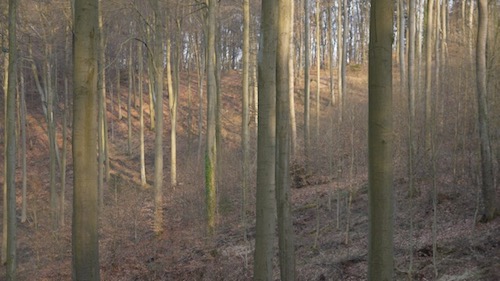
Bergstrasse Forest scene, Germany (Micro Four Thirds Camera, 14-42mm Lumix lens)
The Lumix LX5 was the first terrific camera I came across: small and light, but with a bigger than average sensor of about 40 mm2. It has a bright lens that allows shooting in relatively low light, plus a good zoom range (with built-in stability) and built-in macro. I’d had Lumix FX compact cameras before and was very happy with the experience. The LX5 was a great camera indeed, allowing the user to set many of the controls that are not typically available on this class of camera. Whilst very much a best of breed point and shoot, I concluded it wasn’t going to teach me much more about photography than I knew, nor allow me to do studio photography. Additionally, defining a short ‘field of view’ for shots where only the subject is in focus is harder to achieve with small sensor cameras.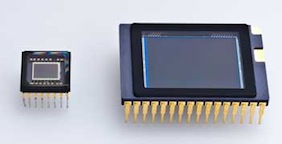
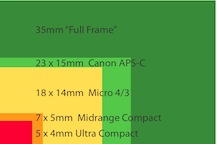
Image borrowed from Olympus (L) showing the typical Point and Shoot sensor (24.7mm sq) and the micro 4/3 sensor (225mm sq). Relative sensor sizes (approximate) for the major digital camera formats (R)
A word about ‘Megapixels’: It turns out that Megapixels in cameras is much like Megahertz in computers. ie: Megapixels are used as a selling and marketing tool and do not necessarily describe the relative quality of photographs that may be taken on a given camera. On the contrary, packing more Megapixels into a limited sensor size can actually increase ‘noise’ and therefor reduce image quality. Much more important it transpires than Megapixels is the area of the chip or ‘sensor’ onto which the image is projected and captured. Put simply: big chip, more detail. And thus the division lines between cameras becomes more apparent. Point and shoot cameras typically have small sensors and DSLRs have big sensors (perhaps 10 times bigger!).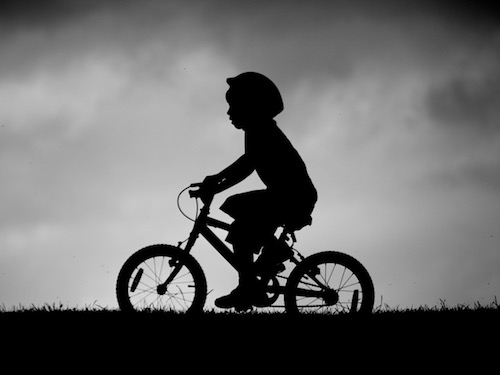
Bicycle Boy, Dusk in Whitley Bay. (Micro 4/3 Camera with14-42mm lens)
So, DLSR cameras bring much higher image quality, but something else just as important: untethered potential. With a DSLR, everything can be tweaked. This may mean under-exposing a moody sea at dusk, or capturing red and white traffic streams at night with a tripod and a long exposure.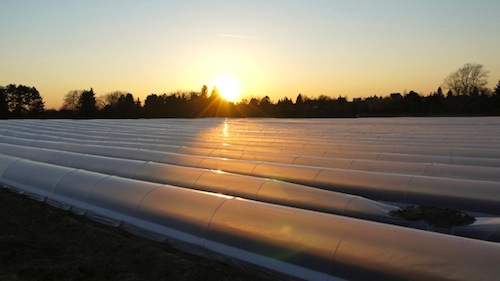
Asparagus growing tubes at sunset on the Bergstrasse. (Micro 4/3 Camera with14mm lens)
It might also mean changing the lens entirely to capture objects in minute macro detail; define a distortion-free face portrait with a telephoto lens; or create a distorted ‘fish-eye’ effect. Different lenses give a camera different personalities and more opportunities to experiment.
DSLRs also allow the possibility of capturing images in RAW format. This is ‘as the camera sees it’ before it is processed into the much smaller and much more manageable JPG format. RAW images are however much bigger, so you’ll need lots of hard disk space. Capturing RAW footage allows the camera’s view of a given scene to be interpreted (and reinterpreted) in different ways at the computer.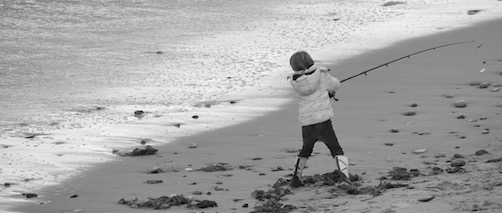
Small Boy Fishing, Micro Four Thirds Camera stretched with digital zoom. (45-200mm lens)
So, now I knew I wanted to have the full interchangeable lens camera experience and I knew I wanted quality images beyond the resolutions possible with point and shoot. My reading quickly told me that Nikon, Canon, Olympus and Lumix were the main contenders, all bringing their own benefits and personalities. I found camera reviews to be interesting but complex on the whole, conflicting and sometimes condescending. After all, the standard of the available equipment is very much on a par and to say otherwise is literally nit-picking. That said however, from my research my conclusion was that Nikon had marginally the best colour rendition, Canon marginally the best ‘own-ability’ and Olympus marginally the most progressive technology.
“Every camera is a compromise of
size, weight, performance and price”
Whilst the general quality of camera equipment is excellent as companies leap-frog each other for the latest technology leads, it is also clear that every camera is a trade-off. Put simply, small = cheap = light = low resolution. High resolution = heavy = expensive = bulky. What I was looking for was a good compromise of great image quality but also good ‘luggability’.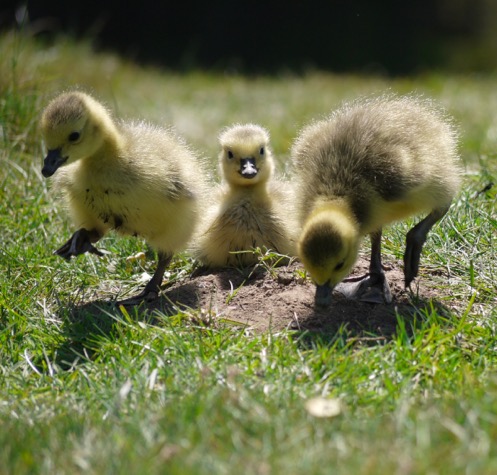
Goslings (baby geese) shows ‘Bokeh’ (how a given lens renders out-of-focus areas) 45-200mm lens
The deciding factor for me turned out to be portability. Accustomed to point and shoot cameras, I was fully aware that whatever ‘system camera’ I bought would be massively bigger, bulkier and heavier than I was used to. There is a golden saying that goes like this: “the best camera you can have is the one you have with you”. Herein lies an important lesson: little cameras like my old Lumix FX8 slip easily into any pocket and will likely be with you when you need it; DSLRs conversely are big and heavy and likely won’t. Whilst this provided a very strong argument for compact cameras like the Lumix LX5 and it’s kin, I began to notice internet chatter about the mirror-less Micro Four Thirds format.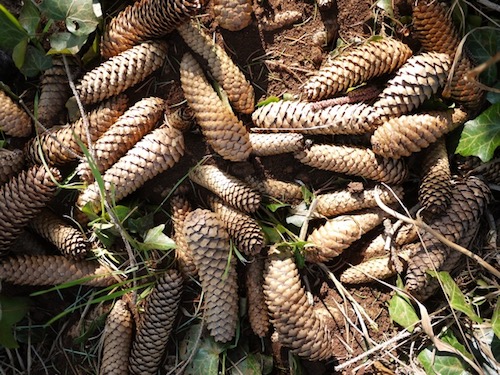
Fir Cones. (Micro 4/3 Camera with 42mm Lumix lens)
Micro Four Thirds (also written M4/3, Micro 4/3 etc.) is a new standard in compact high resolution lens-interchangeable system cameras. It is a DSLR in all but name, albeit with a marginally smaller sensor and no physical viewfinder. It has massive weight and bulk savings and it’s own range of very compact high quality lenses. What’s more, it’s supported by several large companies such as Lumix, Sigma, Leica and Olympus and the lenses are brand-interchangeable. With a slim pancake lens, a Lumix or Olympus becomes about the size of the LX5 and even with a long zoom, halves the volume and the weight of a Nikon or Canon DSLR.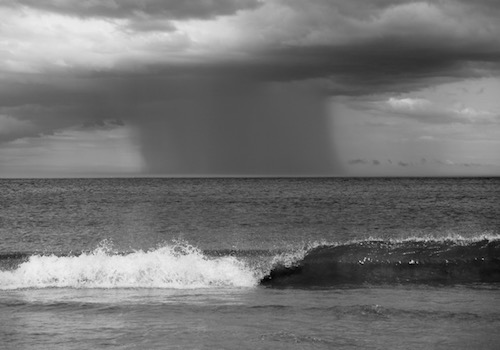
Downpour Offshore. (Micro 4/3 Camera with 14mm Lumix pancake lens)
Micro 4/3 derives it’s name from it’s aspect ratio, which is 4:3, unlike DSLR cameras which use an aspect ratio of 3:2. The anatomy of a Micro 4/3 camera is a little different from a conventional DSLR in that it does away with the mirror / prism system which projects the image from the lens up to the eyepiece. Instead, Micro 4/3 cameras ‘live-preview’ the image onto a high resolution LCD screen or electronic viewfinder (which is a very small, very high resolution LCD which can simulate a true image viewfinder).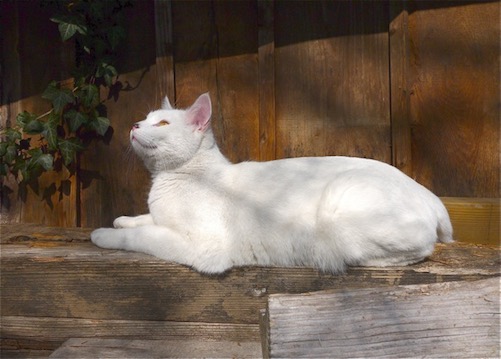
‘Big Mouse Cat’, asymmetric crop in Aperture allows the white cat space into which to gaze. 14mm lens
So I was set. I elected for the Micro 4/3 Lumix GF2 (now superseded by the even more compact, but ‘hot shoe’-less GF3) over the Olympus E-PL2, largely for superficial reasons (the approximate size and feel of a classic rangefinder camera). I got a good deal on a 14mm pancake lens, a 14-42mm mini zoom and a 45-200mm long zoom lens. I also bought a cheap adapter ring to allow me to use EOS lenses from a Canon SLR camera that had been hanging around. 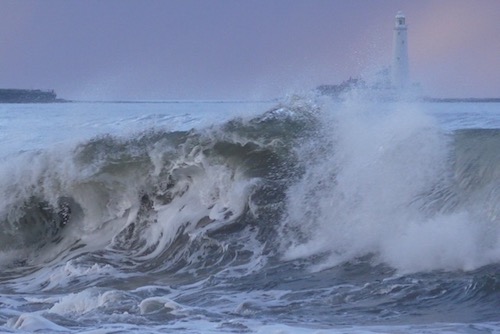
Whitley Bay Lighthouse (Micro Four Thirds Camera, 45-200mm Lumix lens)
[Note that with the Micro 4/3 standard, a 14mm lens has the ‘35mm equivalent’ of 28mm; a 200mm zoom has the 35mm equivalent of 400mm. These may be compared to the ‘35mm equivalent’ of DSLR cameras which use a ‘crop factor’ of 1.6 as opposed to 2.0 for M4/3. Micro 4/3 cameras are able to take photographs in a multitude of formats : 4:3, 3:2, 16:9 and 1:1. Another interesting bonus for M4/3 users is that due to the short distance through the camera to the sensor, pretty much any legacy SLR lens can be fitted with the assistance of a cheap adapter ring. As well as more recent lenses from other standards such as DX, it’s also possible to fit used lenses from even the 60s and 70s to a modern M4/3 camera body. Caveat: focusing and aperture control typically becomes manual with non micro 4/3 lenses].
“Art is largely a matter of selection”
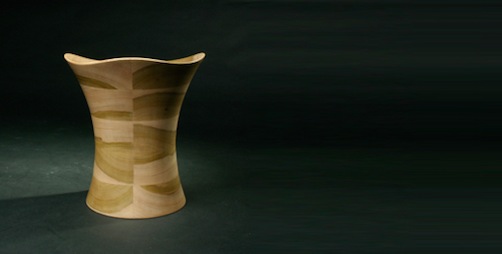
Stingray Stool, Tulip Wood cropped asymmetrically in Aperture, Canon EOS 350D with standard kit lens
Post processing is an interesting and important topic in digital photography. It can be seen as the equivalent of ‘processing’ your film. Naturally, you can allow your camera to do all of this for you and it typically makes some very good technical decisions. We already covered shooting in RAW format. However, there are simple decisions to be made to get more from a photograph: For example, you may decide to crop your image differently after the fact, perhaps to be more selective over the subject matter in order to distill what the viewer will see. Equally, you may decide the photograph is over- or under-exposed and needs correcting or that there’s an effect you wish to achieve, like black and white, motion blur or colour correction. All these and more are possible in a computer program like iPhoto, Picasa or Adobe Elements, or - if you wish to get more involved, higher end programs like Lightroom and Aperture. I started in iPhoto and have progressed to Aperture, which I find to be an amazing piece of software.
In summary, Micro 4/3 cameras and lenses are a viable lightweight, low bulk alternative to a DSLR. As with a DSLR, the main limiting factor in producing great photographs is the experience and the creativity of the user, and not the camera.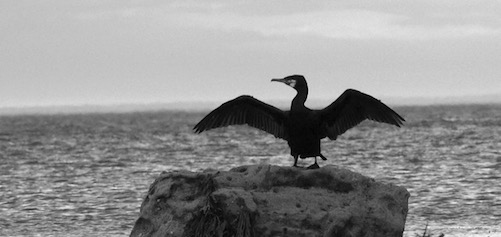
Day’s Work Done, Cormorant (Micro Four Thirds Camera, 45-200mm Lumix lens)
“The first 10,000 photographs are your worst”
Henri Cartier-Bresson
... roll on the next 10,000 !
A selection of photographs I’ve taken so far using a Lumix G Micro Four Thirds camera can be seen on Flickr, as well as throughout this site.
Do get in touch if you have any comments or suggestions.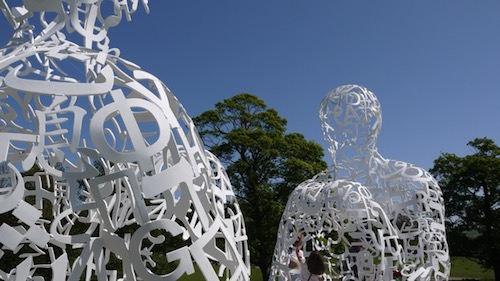
Nomad by Jaume Plensa, Yorkshire Sculpture Park. Micro Four Thirds Camera (14mm pancake lens)
<